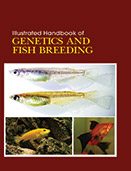Fisheries and Aquaculture

Of all the animals and plants in the aquatic environment fish is the most important source of human food. They are the major source of protein for many people and constitute the main part of the diet in many cultures. Fish and fisheries not only provide a significant portion of the protein available for human consumption, but they are also an economically significant activity, providing jobs and investment opportunities and, for many countries, a means of improving the balance of international trade.
Illustrated Handbook of Genetics and Fish Breeding offers a concise overview from existing methods and operations to recent trends and their impacts on aquaculture for the future. In addition, it reviews the manner in which fish genetic resources can be lost at the intra-specific, species and ecosystem levels and discuss options to best prevent this. It illustrates that fundamental principles of genetic management are common in the implementation of both selective breeding and conservation programmes, and should be emphasized in capacity development efforts. It also highlights the value of applied genetics approaches for increasing aquaculture productivity and the conservation of fish genetic resources.
Aquaculture is moving from extensive to semi-intensive culture system and commercial scale. The main components of production, such as quality of seed, feed and fish health management, need to be improved. Of these, seed quality is the most important factor to enhance productivity. Unfortunately, the deterioration of genetic quality in several cultured fish species has been very striking since the late 1970s. Genetic programs should be undertaken to create high-quality strains, particularly of valuable species, to improve aquaculture production and upgrade market value of the products.
This Illustrated Handbook of Genetics and Fish Breeding presents topics essential to the study of fish genetics, including qualitative and quantitative traits, crossbreeding, inbreeding, genetic drift, hybridization, selection programs, polyploidy, genomics and cloning.
Students and researchers who need to understand how to breed fishes and invertebrates will find a bonanza of information in this book.